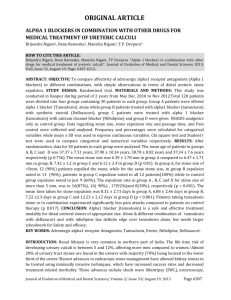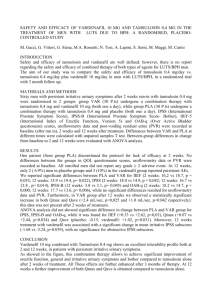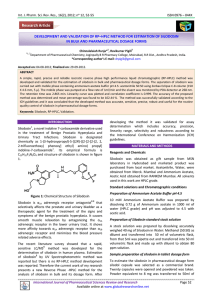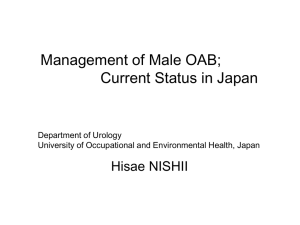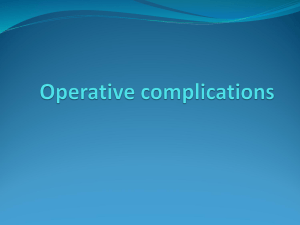Prospective randomized trial comparing the efficacy and safety
advertisement
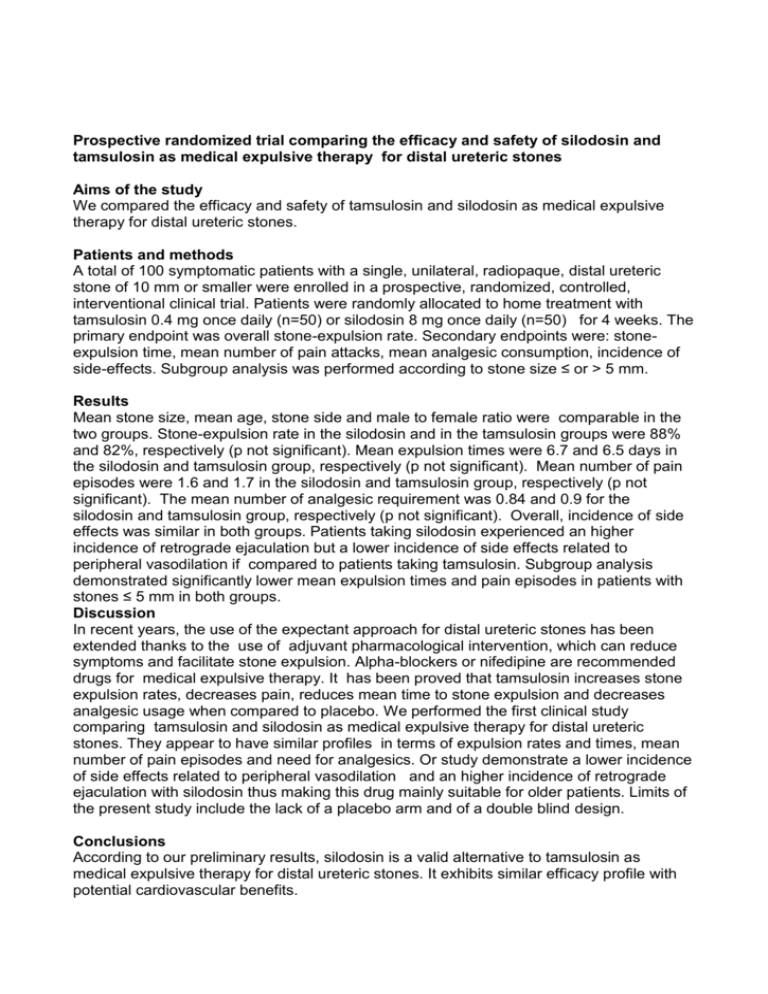
Prospective randomized trial comparing the efficacy and safety of silodosin and tamsulosin as medical expulsive therapy for distal ureteric stones Aims of the study We compared the efficacy and safety of tamsulosin and silodosin as medical expulsive therapy for distal ureteric stones. Patients and methods A total of 100 symptomatic patients with a single, unilateral, radiopaque, distal ureteric stone of 10 mm or smaller were enrolled in a prospective, randomized, controlled, interventional clinical trial. Patients were randomly allocated to home treatment with tamsulosin 0.4 mg once daily (n=50) or silodosin 8 mg once daily (n=50) for 4 weeks. The primary endpoint was overall stone-expulsion rate. Secondary endpoints were: stoneexpulsion time, mean number of pain attacks, mean analgesic consumption, incidence of side-effects. Subgroup analysis was performed according to stone size ≤ or > 5 mm. Results Mean stone size, mean age, stone side and male to female ratio were comparable in the two groups. Stone-expulsion rate in the silodosin and in the tamsulosin groups were 88% and 82%, respectively (p not significant). Mean expulsion times were 6.7 and 6.5 days in the silodosin and tamsulosin group, respectively (p not significant). Mean number of pain episodes were 1.6 and 1.7 in the silodosin and tamsulosin group, respectively (p not significant). The mean number of analgesic requirement was 0.84 and 0.9 for the silodosin and tamsulosin group, respectively (p not significant). Overall, incidence of side effects was similar in both groups. Patients taking silodosin experienced an higher incidence of retrograde ejaculation but a lower incidence of side effects related to peripheral vasodilation if compared to patients taking tamsulosin. Subgroup analysis demonstrated significantly lower mean expulsion times and pain episodes in patients with stones ≤ 5 mm in both groups. Discussion In recent years, the use of the expectant approach for distal ureteric stones has been extended thanks to the use of adjuvant pharmacological intervention, which can reduce symptoms and facilitate stone expulsion. Alpha-blockers or nifedipine are recommended drugs for medical expulsive therapy. It has been proved that tamsulosin increases stone expulsion rates, decreases pain, reduces mean time to stone expulsion and decreases analgesic usage when compared to placebo. We performed the first clinical study comparing tamsulosin and silodosin as medical expulsive therapy for distal ureteric stones. They appear to have similar profiles in terms of expulsion rates and times, mean number of pain episodes and need for analgesics. Or study demonstrate a lower incidence of side effects related to peripheral vasodilation and an higher incidence of retrograde ejaculation with silodosin thus making this drug mainly suitable for older patients. Limits of the present study include the lack of a placebo arm and of a double blind design. Conclusions According to our preliminary results, silodosin is a valid alternative to tamsulosin as medical expulsive therapy for distal ureteric stones. It exhibits similar efficacy profile with potential cardiovascular benefits.
